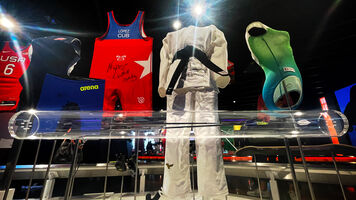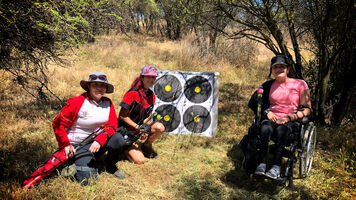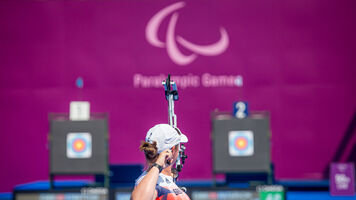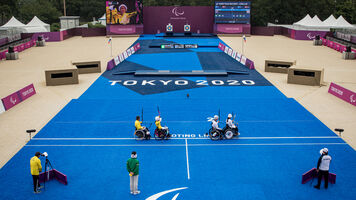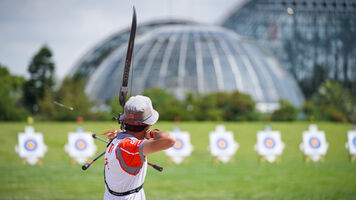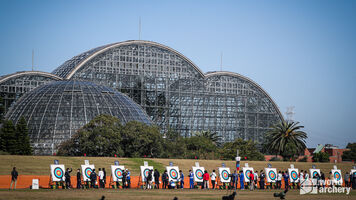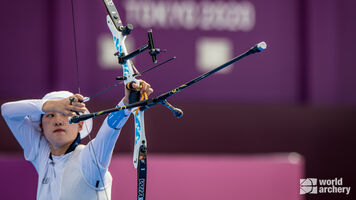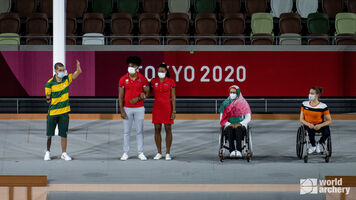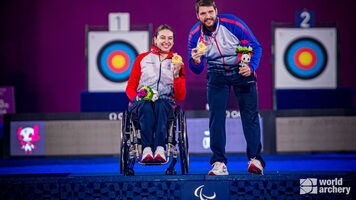Preview: W1 events at the Tokyo 2020 Paralympic Games
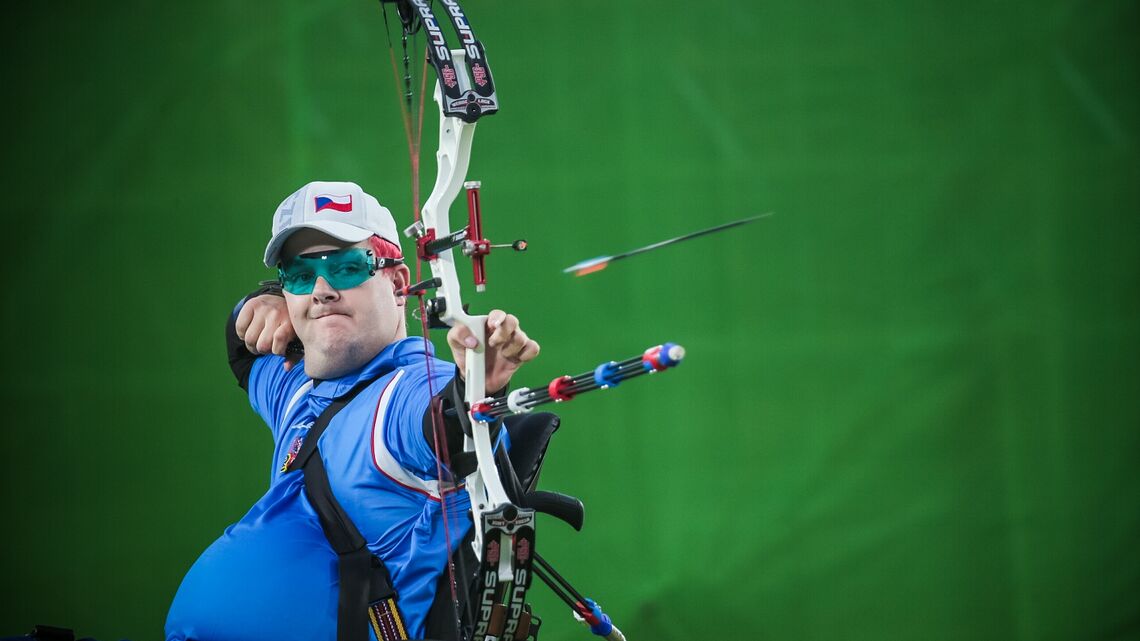
In its current format, the W1 classification (and competition category) was introduced in 2014, after a review of the event structure and how athletes were grouped after the London 2012 Paralympic Games.
Archers competing in the W1 events have the greatest level of impairment.
Great Britain dominated the medals in Rio but won’t this time around, with only a woman’s quota spot booked.
And the competition looks far fiercer, particularly in the women’s competition – where countries like Brazil, Japan, RPC and Turkey have added entries when compared to the start list from five years ago.
Key information
What’s happening? The W1 events at the Tokyo 2020 Paralympic Games, with finals on 28, 30-31 August 2021.
What’s at stake? Three Paralympic titles in men’s individual, women’s individual and mixed team competitions.
Who’s competing? 12 men, 12 women and 7 mixed teams.
What’s the story? Great Britain dominated the newly-introduced W1 events at Rio 2016, taking all three gold medals. That won’t be the case in Tokyo after the nation failed to qualify a men’s quota. With seven mixed teams in play, expect the W1 competition to be fiercer – and podiums harder to come by.
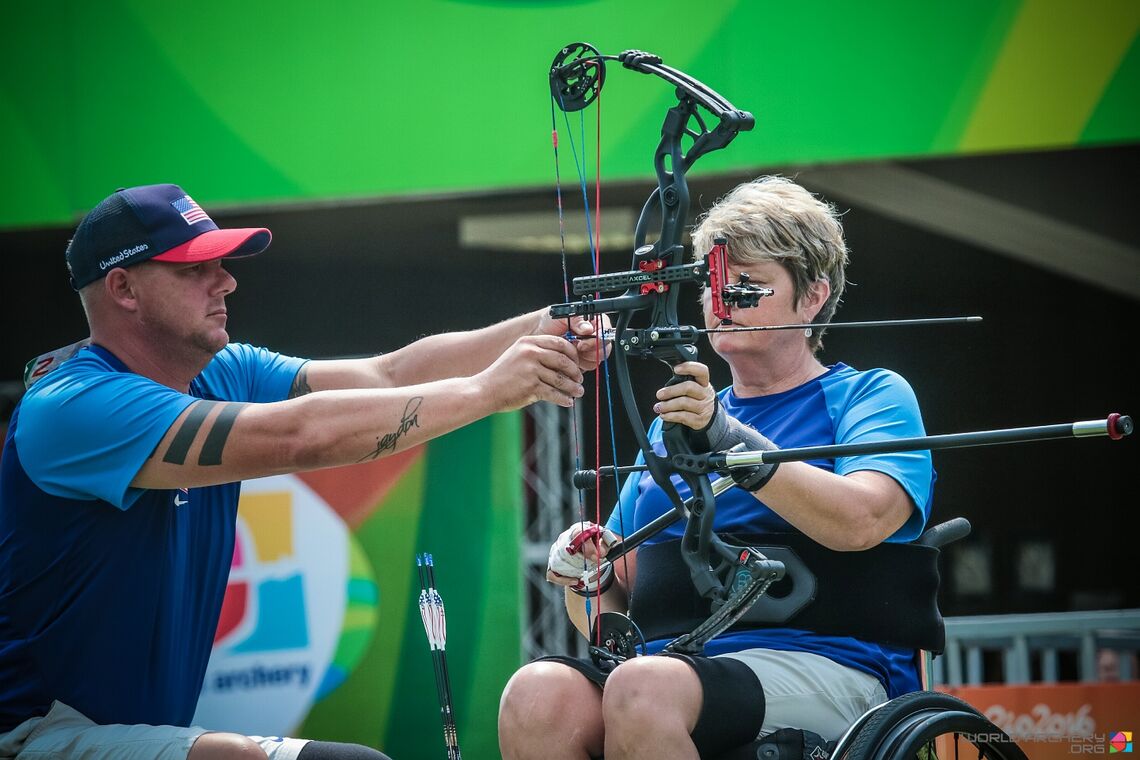
Podium at Rio 2016
The men’s individual podium:
- John Walker, Great Britain
- David Drahoninsky, Czech Republic
- Peter Kinik, Slovakia
The women’s individual podium:
- Jessica Stretton, Great Britain
- Jo Frith, Great Britain
- Vicky Jenkins, Great Britain
The mixed team podium:
 Great Britain
Great Britain Korea
Korea Czech Republic
Czech Republic
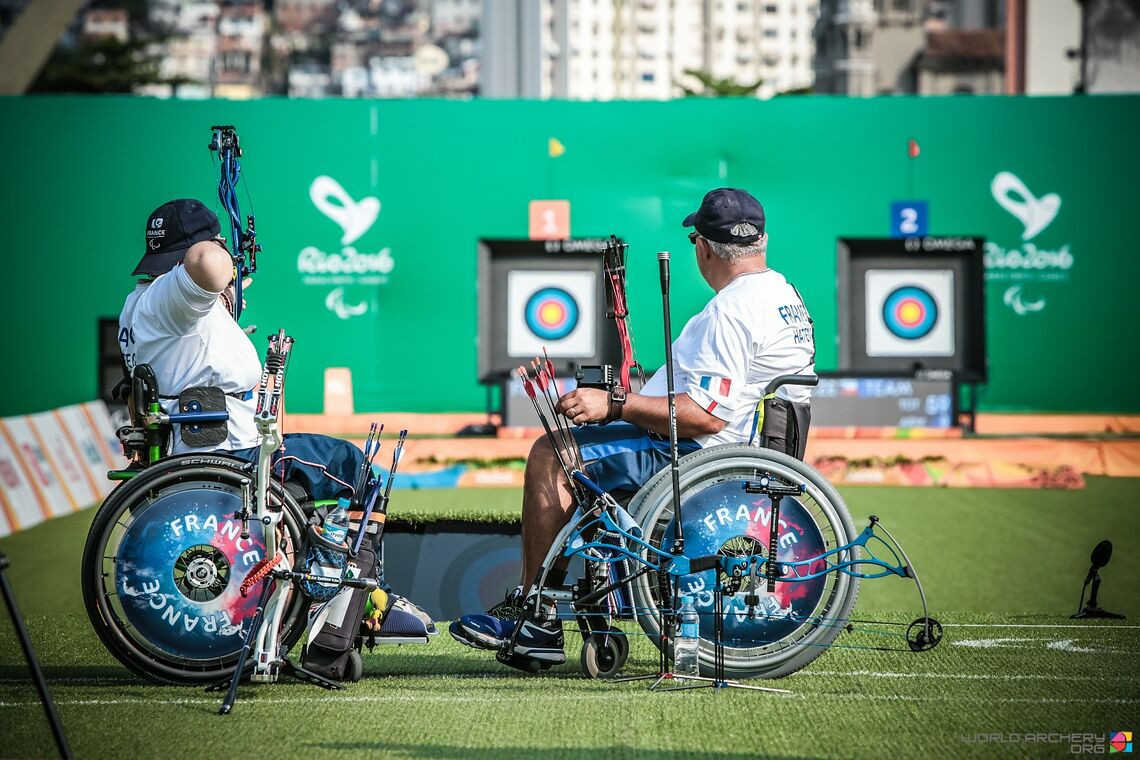
Line-up
Correct as of 19 August 2021. Nations in bold also compete in the mixed team event.
 Brazil: 2 (1 man, 1 woman) – Luiz Gomes, Rejane Candida de Silva
Brazil: 2 (1 man, 1 woman) – Luiz Gomes, Rejane Candida de Silva China: 4 (2 men, 2 women) – Li Ji, Zhang Tianxin, Chen Minyi, Liu Jing
China: 4 (2 men, 2 women) – Li Ji, Zhang Tianxin, Chen Minyi, Liu Jing Czech Republic: 3 (1 man, 2 women) – David Drahoninsky, Tereza Brandtlova, Sarka Musilova
Czech Republic: 3 (1 man, 2 women) – David Drahoninsky, Tereza Brandtlova, Sarka Musilova Great Britain: 1 (1 woman) – Victoria Rumary
Great Britain: 1 (1 woman) – Victoria Rumary Hungary: 1 (1 man) – Tamas Gaspar
Hungary: 1 (1 man) – Tamas Gaspar Iran: 1 (1 man) – Mohammadreza Zandi
Iran: 1 (1 man) – Mohammadreza Zandi Italy: 1 (1 woman) – Asia Pellizzari
Italy: 1 (1 woman) – Asia Pellizzari Japan: 2 (1 man, 1 woman) – Kohji Oyama, Aiko Okazaki
Japan: 2 (1 man, 1 woman) – Kohji Oyama, Aiko Okazaki Korea: 2 (1 man, 1 woman) – Koo Dong Sub, Kim Ok Geum
Korea: 2 (1 man, 1 woman) – Koo Dong Sub, Kim Ok Geum RPC: 2 (1 man, 1 woman) – Aleksei Leonov, Elena Krutova
RPC: 2 (1 man, 1 woman) – Aleksei Leonov, Elena Krutova South Africa: 1 (1 man) – Shaun Anderson
South Africa: 1 (1 man) – Shaun Anderson Turkey: 3 (2 men, 1 woman) – Bahattin Hekimoglu, Nihat Turkmenoglu, Fatma Danabas
Turkey: 3 (2 men, 1 woman) – Bahattin Hekimoglu, Nihat Turkmenoglu, Fatma Danabas USA: 1 (1 woman) – Lisa Coryell
USA: 1 (1 woman) – Lisa Coryell
Competition
Archers competing in the W1 division at the Tokyo 2020 Paralympic Games have a W1 classification, meaning they usually have impairment in the top and bottom halves of their bodies, torso and at least three limbs.
There are individual and mixed team events. A mixed team consists of two archers, one man and one woman, from the same nation.
W1 archers shoot over a distance of 50 metres at targets measuring 80 centimetres in diameter, aiming to hit a 10-ring measuring just eight centimetres in diameter.
Archers and mixed teams are seeded on the results of qualifying, which consists of 72 arrows shot for total score on 27 August, and progress through head-to-head brackets, in which the winner of each match advances and the loser is eliminated until a champion is crowned.
W1 matches are decided using cumulative scoring, in which the goal is to have the highest points total after a certain number of arrows. That number is 15 arrows, split into five ends of three, in individual matches and 16 arrows, split into four ends of four, in mixed team matches.
If an individual match is tied 15 arrows or a mixed team match tied after 16 arrows, then the match is sent to a tiebreak or shoot-off.
Each archer shoots an arrow. In an individual match, the archer whose arrow lands closest to the middle of the target wins the match. In a mixed team match, the nation that has the highest score with its two arrows wins the match but, if tied, victory goes to whichever nation has an arrow closer to the middle of the target.

 Great Britain
Great Britain Korea
Korea Czech Republic
Czech Republic Brazil: 2 (1 man, 1 woman) – Luiz Gomes, Rejane Candida de Silva
Brazil: 2 (1 man, 1 woman) – Luiz Gomes, Rejane Candida de Silva China: 4 (2 men, 2 women) – Li Ji, Zhang Tianxin, Chen Minyi, Liu Jing
China: 4 (2 men, 2 women) – Li Ji, Zhang Tianxin, Chen Minyi, Liu Jing Hungary: 1 (1 man) – Tamas Gaspar
Hungary: 1 (1 man) – Tamas Gaspar Iran: 1 (1 man) – Mohammadreza Zandi
Iran: 1 (1 man) – Mohammadreza Zandi Italy: 1 (1 woman) – Asia Pellizzari
Italy: 1 (1 woman) – Asia Pellizzari Japan: 2 (1 man, 1 woman) – Kohji Oyama, Aiko Okazaki
Japan: 2 (1 man, 1 woman) – Kohji Oyama, Aiko Okazaki RPC: 2 (1 man, 1 woman) – Aleksei Leonov, Elena Krutova
RPC: 2 (1 man, 1 woman) – Aleksei Leonov, Elena Krutova South Africa: 1 (1 man) – Shaun Anderson
South Africa: 1 (1 man) – Shaun Anderson Turkey: 3 (2 men, 1 woman) – Bahattin Hekimoglu, Nihat Turkmenoglu, Fatma Danabas
Turkey: 3 (2 men, 1 woman) – Bahattin Hekimoglu, Nihat Turkmenoglu, Fatma Danabas USA: 1 (1 woman) – Lisa Coryell
USA: 1 (1 woman) – Lisa Coryell
